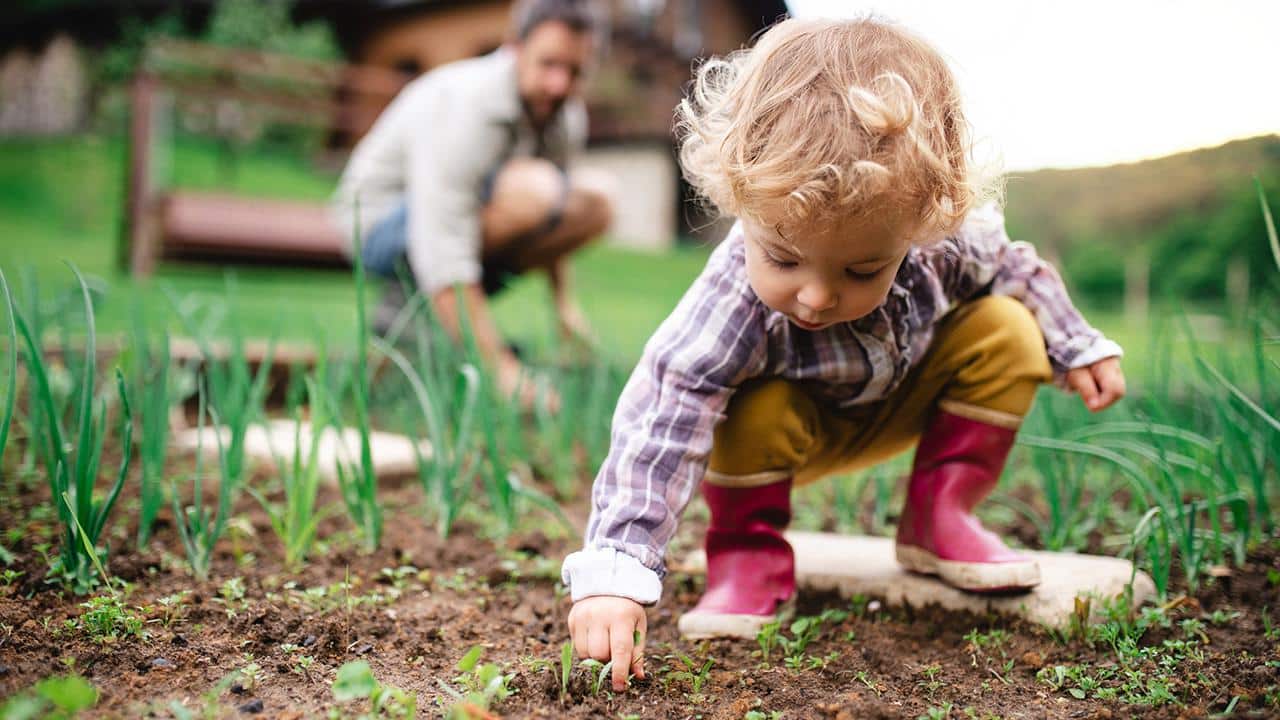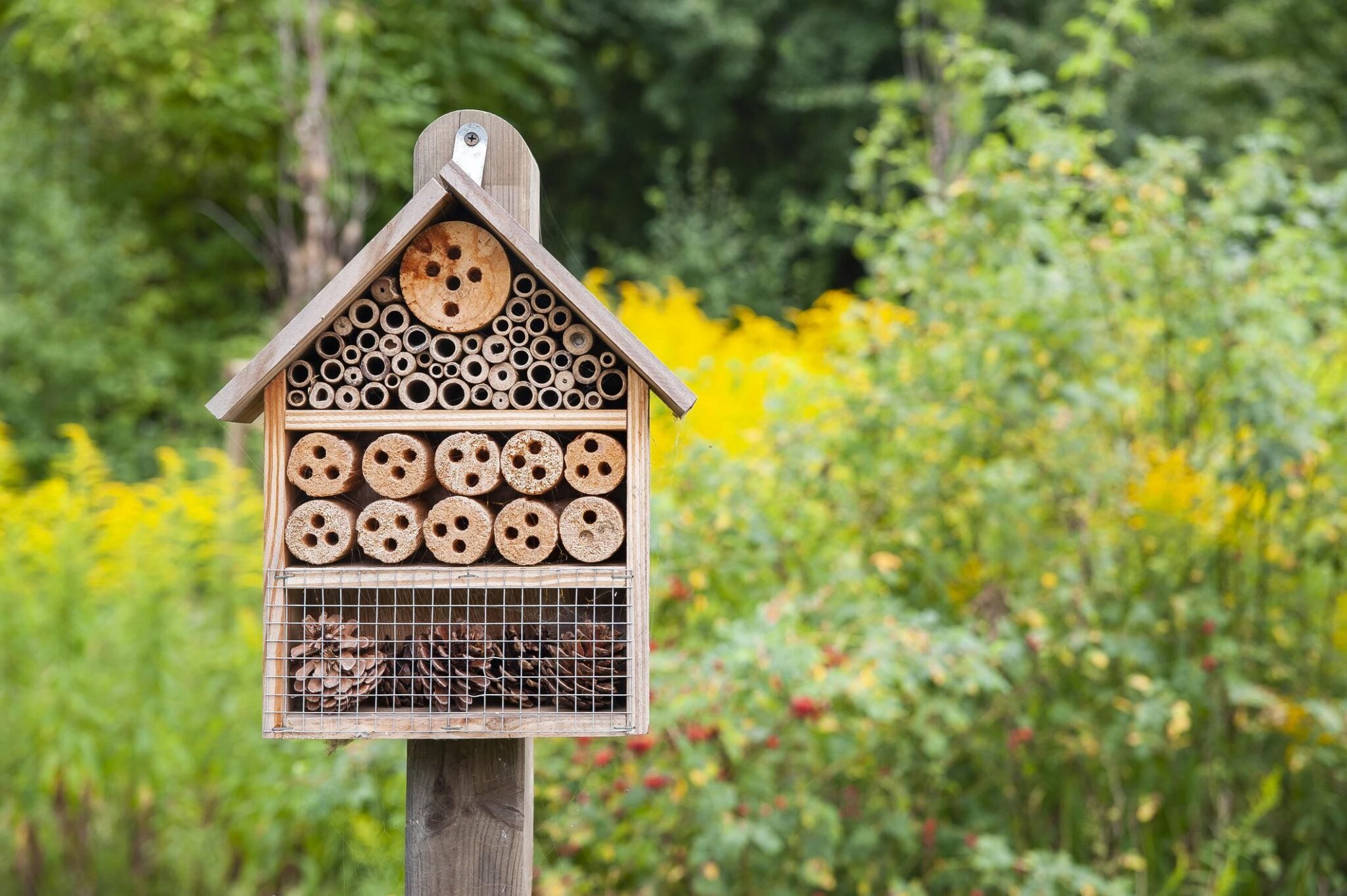
7 Educational Nature Activities for Kids You Can Do at Home This Summer

Halfpoint Images / Moment / Getty Images
After a year of learning from behind a screen, it’s time for some outdoor play this summer.
It’s widely accepted that spending time in nature has unparalleled benefits for children; kids who play outdoors are happier, more attentive, and less anxious than those who spend more time indoors. Being in nature builds confidence and creativity, reduces stress, and teaches responsibility to children – and, that time outdoors can also incorporate educational activities that help children feel excited about science and the wonders of the natural world, instilling in them a lifelong environmental ethic. Hands-on activity and play will teach them about our planet in ways not possible from merely learning in a classroom (or a Zoom screen).
This summer, take the opportunity to educate your children about the natural world, environmental conservation, and how to be stewards of the planet with a few simple, educational nature activities that will keep them entertained at home.
1. Build a Bee or Bug Hotel
dies-irae / iStock / Getty Images Plus
By providing a place for bugs to nest, insect hotels bring critters into your yard – or front porch, deck, or communal space – fostering a healthy, biodiverse backyard ecosystem. Make your own insect hotel to teach your kids about food chains, biodiversity, and pollination.
These structures can be made entirely with found or repurposed materials. Send the kids on a mission to find the filler material: twigs, pinecones, woodchips, bark, or hollow reeds – like bamboo – or roll up scraps of paper yourself. Use a wooden box or an open bird house as the frame, and pack the space strategically with the filler items. The goal is to create small openings for a variety of insects to nest; ladybugs, hoverflies, spiders, millipedes, and beetles all might make their homes here. You can create several small insect hotels, or build comparts within one larger structure, filling each with different materials.
As global bee populations diminish due to climate change and habitat destruction, teach your child about the importance of protecting pollinators by making room for the bees in your insect hotel. Solitary bees – that is, those who are not part of a hive – like to make their nests in small holes, which they protect with a mud “door” once an egg has been laid inside by a female. For this section of the hotel, drill holes of varied sizes in a block of wood (taking care not to drill entirely to the other side) at least 3/4″ apart.
Watching the bees settle into their homes and alight on flowers in the garden provides the opportunity to teach children about pollination, and the importance of preserving bee populations.
2. Plant a Native Garden
A native plant garden is the perfect accompaniment to an insect hotel, and helps build a healthy, cohesive backyard ecosystem for kids to explore.
Teach children about native plants by planting some of your own, and watching as different species thrive in your yard. Even with only a small space, you can still grow native flowers in the ground, raised beds, or containers. To attract butterflies, plant shrubs and a mixture of annual and perennial flowers of varied heights; check out your local Native Plant Society to learn what flowers are native to your area. Demonstrate how the flowers, insects, birds, and small mammals all need each other to survive as crucial parts of the food web.
Consider alternatives to traditional turf grass – most of which is not native to North America – for your lawn as well, such as thyme, clover, and flowering perennial groundcover plants, which will attract and delight pollinators.
3. Grow Vegetables
Thomas Barwick / DigitalVision / Getty Images
It’s easy to watch produce come back from the grocery store without knowing where it really comes from; take advantage of the summer weather by growing a couple undemanding vegetables. Tending to a few crops – especially high-interest plants that your kids can easily identify, like tomatoes or lettuce – is a hands-on way to teach children about the proper watering, sunlight, and healthy soil (especially if you’re able to use your own compost) needed for growing, and how they’re crucial for all the food that’s brought to the table. Snap peas, zucchini, cucumbers, lettuce, and spinach are all easy to grow and very rewarding with high yields.
You don’t even need a big yard to teach your kids about gardening: most vegetables can be grown in containers, or in pots on the windowsill. Start by creating your own starters by planting seeds in small pots in a sunny spot, tending to them frequently. Once they’re large enough, help your child transfer them to the garden or containers on the sidewalk, patio, or balcony. Encourage them to water the plants, make sure they’re getting proper sunlight, and watch them grow. When it’s time to harvest, cook a meal together with the fruits of your labor to show them the whole process of producing food, and how we rely on our environment to feed us.
4. Propagate Plants
For those without a garden space, bring nature indoors with a few different houseplants, or propagate your own from clippings.
Monsteras, philodendron, aloe, pothos, and spider plants are all resilient, rewarding plants that thrive inside and require very little maintenance. Putting children in charge of watering and caring for houseplants not only teaches them responsibility, but shows them how to nurture a living thing (one that is relatively low stakes) for perhaps the first time.
Like watching vegetables grow in the garden, propagating new plants is a very illustrative process. Most house plants can be grown from a clipping – although research the preferred methods for whatever plant you have on hand – which, when left in water for a few weeks, will grow roots and can be planted in soil, creating even more plants for your home or to be given away to friends and neighbors.
5. Mushroom Logs
Not only houseplants can be grown inside. Available for purchase online – including from small farms like Willow Bend Farm – mushroom logs are freshly inoculated and packed with mycelium, which will eventually produce a flush of mushrooms on the outside.
Waiting and watching for the mushrooms is exciting, and, when paired with an educational book about fungi, demonstrates for older children how mycelium works under the surface of the log to produce mushrooms. The Mushroom Fan Club by Elise Gravel or We Are Fungi by Christine Nishiyama are excellent entryways into the fascinating world of mycology.
Although specifications for maintenance vary, logs should generally be soaked overnight in filtered water once or twice a month, and left in a cool, shaded area. If cared for correctly, you could harvest shiitake, lion’s mane, or oyster mushrooms from a single log for several years!
6. Bird Watching
kali9 / E+ / Getty Images
No matter where you live, there will always be birds to look for and identify. Begin bird watching with your kids to teach them about migration and local habitats, and get them excited about nature. Birding is a great reason to get outside, and learning the names of local birds will make them feel more connected to their surroundings and the local environment.
Watch for birds right in your neighborhood or yard – especially if you’ve planted a native garden, where they’ll come to feed and nest – or take a trip to a local park, nature preserve, lake, or hiking trail. To identify a bird, have your child look through a bird guidebook or search on an online database like the Audubon Bird Guide app, where they can input the shape, color, and habitat of birds to narrow down what it might be. Research the birdcalls and songs of local species, and listen for them together on your next birding excursion.
No matter what birds you find, your children (and you!) will benefit from slowing down and taking in the surrounding environment through sight and sound.
7. Nature Bingo
While you’re outdoors, there is much more to look for than birds!
Explore resources from local conservation groups – like your regional Sierra Club chapter or parks department – that detail trees, birds, small mammals, and plants that you might find in the area. Create a bingo chart with pictures of these natural things for kids to look for on a neighborhood walk or hike, checking them off as they go (perhaps with a prize involved).
Some groups will post free games and activities on their websites or social media, or even host nature walks or other events for children; explore what options exist in your area for your kids to learn from local naturalists this summer and beyond.
Linnea graduated from Skidmore College in 2019 with a Bachelor’s degree in English and Environmental Studies, and now lives in Brooklyn, New York. Most recently, Linnea worked at Hunger Free America, and has interned with WHYY in Philadelphia, Saratoga Living Magazine, and the Sierra Club in Washington, DC.
Linnea enjoys hiking and spending time outdoors, reading, practicing her German, and volunteering on farms and gardens and for environmental justice efforts in her community. Along with journalism, she is also an essayist and writer of creative nonfiction.
- Your Guide to Talking With Kids of All Ages About Climate Change ...
- 12 Kid-Friendly National Parks - EcoWatch
- 15 Healthy Recipes You Can Cook With Your Kids - EcoWatch
- 9 Vegetables You Can Grow (Almost) Anywhere
- A Different Kind of Life: Why You Should WWOOF, and How You Should Do It

 233k
233k  41k
41k  Subscribe
Subscribe 


